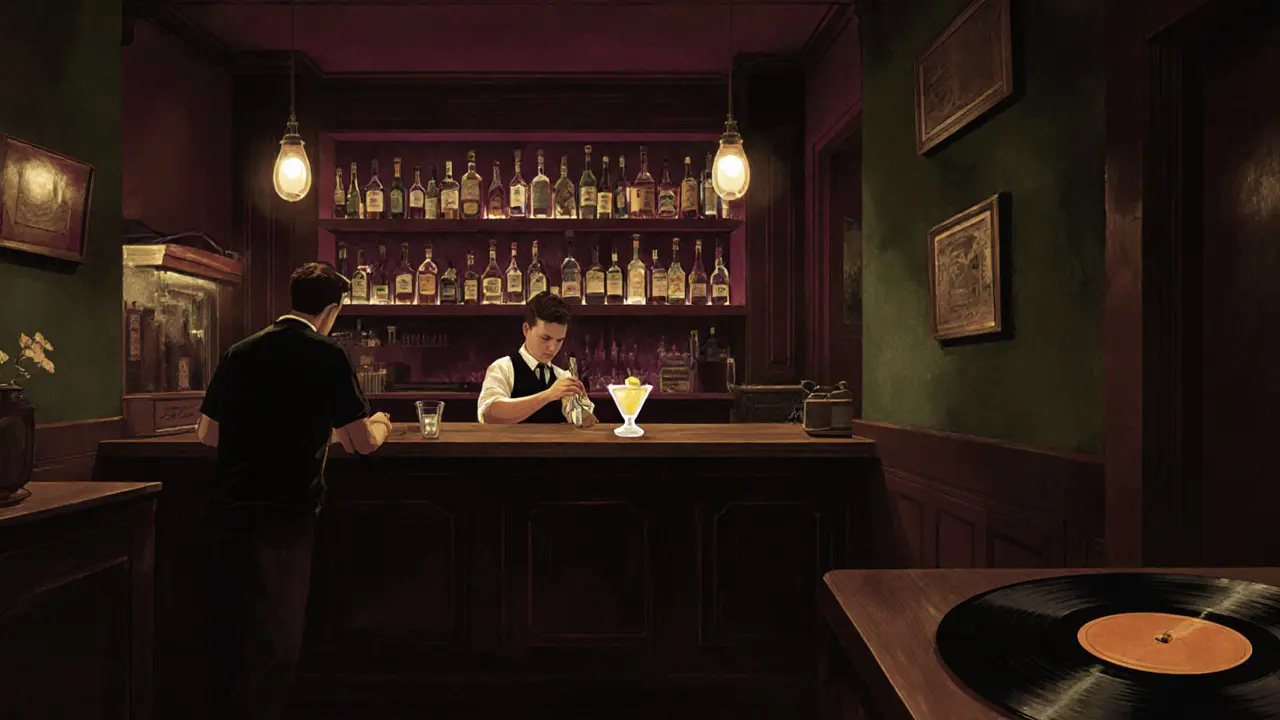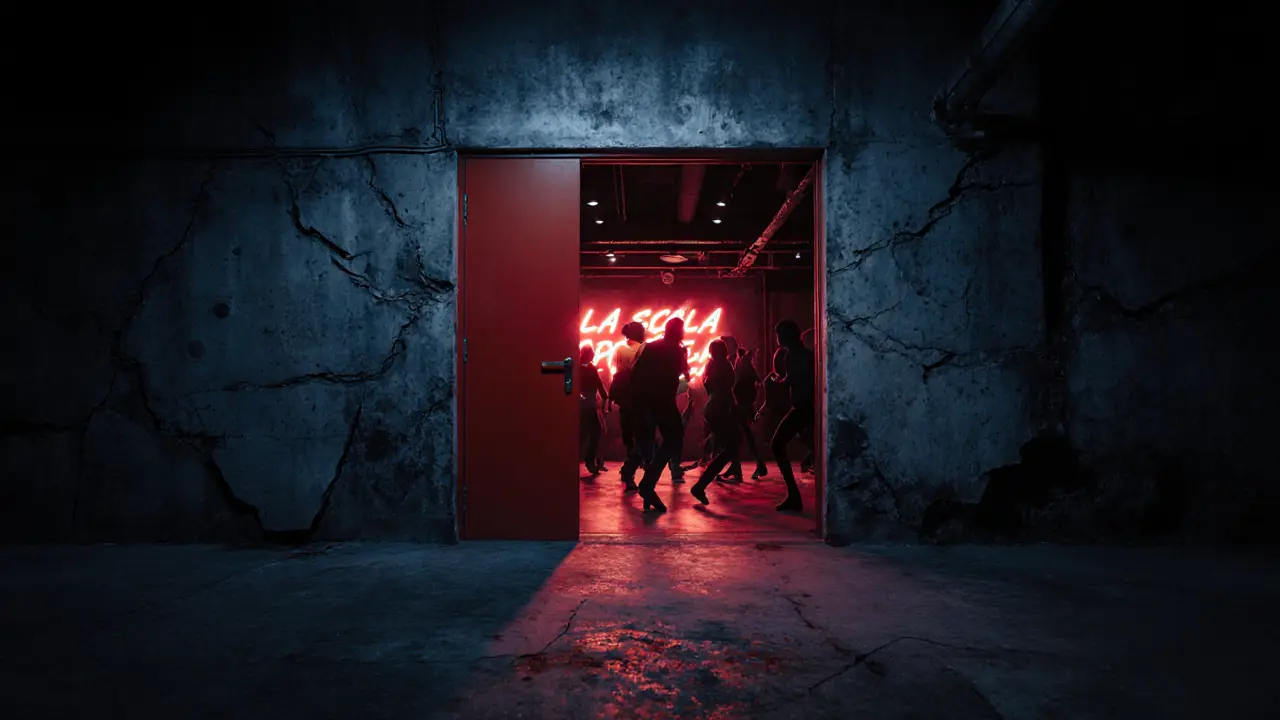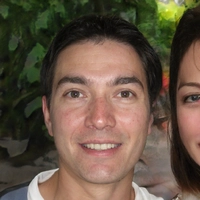When the sun sets over Milan, the city doesn’t sleep-it transforms. Forget the daytime image of fashion runways and designer boutiques. At night, Milan becomes a pulsing mix of hidden speakeasies, rooftop lounges, buzzing wine bars, and underground clubs that draw locals and visitors alike. This isn’t just about partying. It’s about experiencing the rhythm of a city that knows how to turn an evening into something unforgettable.
Start in Navigli: Where the Canals Come Alive
Head south to Navigli, the canal district that turns into Milan’s most lively open-air party zone after 8 p.m. The two canals-Naviglio Grande and Naviglio Pavese-are lined with outdoor terraces, live music, and people sipping Aperol spritzes or craft beer from local breweries like Birrificio Italiano. It’s not a club scene-it’s a neighborhood vibe. Locals bring blankets, dogs, and friends. By 11 p.m., the street musicians start playing jazz or indie rock, and the crowd swells. Don’t miss Bar Basso on Via Tortona. It’s not flashy, but it’s where the Negroni was invented in 1919, and they still make it the old-school way-with gin, Campari, and sweet vermouth, stirred, not shaken.
Brera: Chic Bars and Hidden Gems
Brera feels like a secret even though everyone knows about it. Narrow cobblestone streets, art galleries shuttered for the night, and dimly lit bars where the music is low and the drinks are expensive for a reason. This is where Milan’s creatives unwind. Try Bar del Fico-a tiny, no-menu spot where the bartender asks what mood you’re in and crafts something unique. Their signature is the Brera Sour: gin, lemon, elderflower, and a touch of smoked salt. If you want something louder, walk two blocks to Le Jockey, a retro-chic bar with vinyl records spinning and a crowd that’s all about style, not volume.
The Clubs: Where Milan Gets Wild
If you’re here for dancing until sunrise, you need to know the real clubs-not the tourist traps. La Scala isn’t the opera house-it’s a legendary underground club in a converted warehouse near Porta Genova. No sign. Just a red door. You need to know the password or show up early. Inside, it’s industrial lights, deep house, and a crowd that’s been coming for 20 years. It’s not on Instagram. It’s not on Google Maps. You find it by asking someone who’s been there.
For a more polished experience, Magazzini Generali is a multi-level venue with themed rooms: one for techno, one for disco, one for live electronic sets. It opens at midnight and doesn’t empty until 6 a.m. The crowd is mixed-designers, students, expats, tourists-but everyone’s here for the music, not the VIP section. Tickets cost €15-€25, and you pay at the door. No reservations.
Rooftops: Views, Cocktails, and Silence
Some nights, you want to sit, sip, and watch the city glow. That’s where Milan’s rooftop bars shine. Terrazza Aperol at the Park Hyatt has one of the best views of the Duomo, and their Aperol spritzes are perfect for watching the sunset. It’s not cheap-€18 a drink-but the atmosphere is worth it. For something quieter, head to 101 Rooftop Bar on Via Torino. It’s tucked above a boutique hotel, has zero pretension, and plays jazz at night. The cocktails are made with Italian herbs and seasonal fruits. No loud music. No flashing lights. Just the hum of the city below.

Wine Bars: The Local Secret
Most tourists think of Milan as a cocktail city. But locals? They know the wine bars. Enoteca Pinchiorri is the most famous, but it’s pricey and requires reservations months ahead. For something real, go to Bar Vini e Formaggi in the Porta Venezia area. It’s a tiny space with 80 bottles of Italian wine, all by the glass. They serve cured meats and local cheeses on wooden boards. The owner, Marco, knows every producer and will tell you why that Lambrusco from Emilia-Romagna is better than any Chianti. It’s not a tourist spot. It’s a place where Milanese come to talk, not to be seen.
When to Go: Timing Matters
Milan doesn’t start late. Most places open at 9 p.m. or 10 p.m. Dinner runs late-8 p.m. to 11 p.m. That means the real nightlife begins after midnight. Clubs don’t fill up until 1 a.m. and peak at 3 a.m. If you’re there on a Friday or Saturday, expect lines. Weeknights are quieter, but the vibe is more authentic. Thursday nights are surprisingly good-locals call it "the quiet Friday." You’ll get better service, cheaper drinks, and the same energy.
What to Wear
Milan doesn’t have a strict dress code, but it has standards. No sneakers. No hoodies. No flip-flops. Even in summer, people dress up a little. Think clean lines, dark colors, well-fitted clothes. You don’t need a suit, but you do need to look like you care. At rooftop bars and upscale lounges, women often wear dresses or tailored pants. Men wear button-downs or smart tees. At clubs like La Scala, it’s more relaxed-but still, no athletic wear. If you show up in gym shorts, you’ll be turned away.

How to Get Around
The metro runs until 1:30 a.m. on weekdays and 2:30 a.m. on weekends. After that, you’ll need a taxi or ride-share. Uber isn’t big here-use Free Now or local apps like Beat. Walking is fine in Navigli or Brera, but avoid wandering alone after 2 a.m. in less crowded areas like Porta Venezia or Lambrate. Stick to main streets. Most clubs are within 15 minutes of each other by taxi.
What to Avoid
Don’t go to clubs that advertise "Milan’s #1 Party Spot" on Facebook. Those are tourist traps with overpriced drinks and fake crowds. Avoid bars near the Duomo that charge €20 for a beer-those are for people who don’t know any better. And never, ever try to enter a club without ID. Italian law requires it. No exceptions. Even if you look 30, they’ll check. Bring your passport or EU ID card.
Final Tip: Let Milan Surprise You
The best nights in Milan aren’t planned. They happen when you follow a group of locals into a basement bar you didn’t know existed. Or when you end up dancing in a warehouse with no name, surrounded by strangers who become friends by 3 a.m. Don’t just check off spots. Talk to people. Ask where they go. Listen. That’s how you find the real Milan after dark.
What time do clubs in Milan usually close?
Most clubs in Milan open around midnight and stay open until 3 a.m. or 4 a.m. on weekends. Some, like Magazzini Generali, run until 6 a.m. on Fridays and Saturdays. Weeknights end earlier, usually by 2 a.m. Always check the venue’s Instagram or website for exact hours-they change seasonally.
Is Milan nightlife safe for tourists?
Yes, Milan’s nightlife is generally safe, especially in popular areas like Navigli, Brera, and around Porta Genova. Stick to well-lit streets, avoid unmarked alleys after midnight, and don’t carry large amounts of cash. Pickpocketing is rare but possible in crowded bars. Use official taxis or ride-share apps after 2 a.m. and always keep your belongings close.
Do I need to book tickets for Milan clubs in advance?
For most clubs, no. Places like La Scala and Magazzini Generali don’t take reservations. You pay at the door. But for rooftop bars like Terrazza Aperol or special events (live DJs, themed nights), booking a table online can save you from waiting in line. Check the venue’s website or Instagram for event details.
What’s the average cost of a night out in Milan?
A night out can cost anywhere from €30 to €100 depending on your choices. A drink at a wine bar runs €8-€12. Cocktails at rooftop bars are €15-€20. Club entry is €15-€25. If you’re eating dinner, add €25-€50. Most people spend €50-€70 for a full evening-dinner, drinks, and a club. Budget travelers can stick to Navigli for under €40.
Are there any age restrictions for nightlife in Milan?
Yes. The legal drinking age in Italy is 18, and clubs enforce this strictly. You must show ID-passport or EU ID card-to enter any bar or club after 10 p.m. Some venues, especially those serving alcohol past midnight, may require you to be 21 or older. Don’t assume your foreign ID will be accepted without a photo or date of birth. Always carry it.
